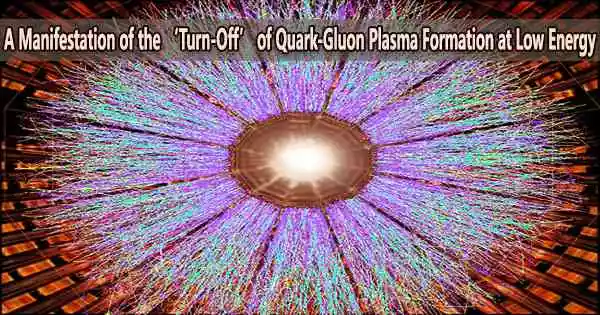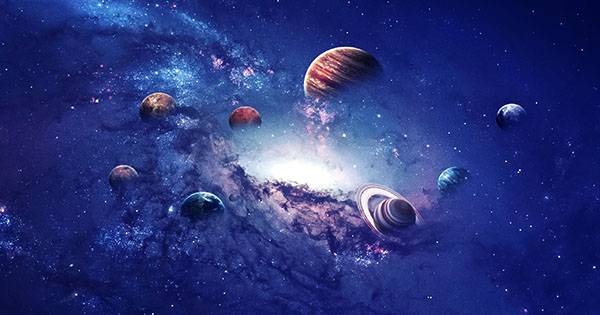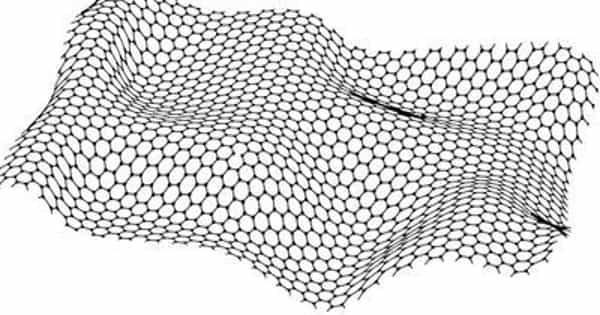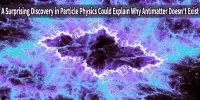According to new research, it is possible to “turn off” the generation of an exotic state of matter in collisions of gold nuclei at the Relativistic Heavy Ion Collider (RHIC), an atom-smasher at the Brookhaven National Laboratory of the U.S. Department of Energy.
In the statistics that reflect “higher order” features of the distribution of protons created in these collisions, the “off” signal manifests as a change in sign from negative to positive.
The results, which were recently released by RHIC’s STAR Collaboration in Physical Review Letters, will aid physicists in mapping out the temperature and density requirements for the existence of the exotic matter known as a quark-gluon plasma (QGP) and in identifying crucial characteristics of the phases of nuclear matter.
“Freeing” quarks and gluons
Generating and studying QGP has been a central goal of research at RHIC. When the collider started functioning in 2000, several observations have demonstrated that the most powerful collisions of atomic nuclei at 200 billion electron volts (GeV) “melt” the borders of protons and neutrons to briefly release the quarks and gluons that make up common nuclear particles.
Various measurements have shown that the QGP exists down to 19.6 GeV. The new research conducted a systematic search for the energy at which the generation of these thermalized quarks and gluons ceases using data gathered by RHIC’s STAR detector during the first stage of the RHIC Beam Energy Scan.
“We analyzed 10 collision energies from a center of mass energy of 200 GeV, which is RHIC’s highest collision energy between two gold beams, down to 3 GeV, where one gold beam collides with a stationary gold target,” said Ashish Pandav, a student at India’s National Institute of Science Education and Research (NISER), now stationed at DOE’s Lawrence Berkeley National Laboratory (LBNL). “These data give us the widest coverage to date of the nuclear phase diagram the map of how nuclear matter changes with temperature and density.”
These computing resources and lattice QCD an approach for solving the equations that considers quark-gluon interactions on 4D space-time lattice have enabled great advances in our ability to make precise predictions about the behavior of higher order characteristics of conserved charge distributions in QCD.
Frithjof Karsch
The scientists to evaluate whether a QGP was created at each collision energy examined the distribution of protons produced in each collision event.
Systematic analysis
“We measured, event by event, the number of protons minus the number of antiprotons produced, and the distribution of that net-proton production,” said Bedangadas Mohanty, a physics professor at NISER.
Data were examined by Mohanty and the STAR team for a number of distributional features, including mean value, variance, degree of skewness, and so forth, up to what are referred to as 5th and 6th order characteristics.
Then, they compared their results to forecasts derived from simulations of the interactions between quarks and gluons on a discrete spacetime lattice using the equations of quantum chromodynamics (QCD).
“These numerical simulations of QCD have the formation of a thermalized quark-gluon plasma built in, so if the data match the predictions, it is evidence that QGP is present,” Mohanty said.
Hierarchical ordering
The net-proton distribution characteristics are predicted to be ordered hierarchically by the QCD computations, and some correlations between these characteristics are predicted to have negative values. The STAR data show that these thermodynamic trends often hold true for all impact energies save the lowest.
“We know at 200 GeV that RHIC collisions create a QGP, but what about the next energy, 62.4 GeV, 54.4 GeV, 39, 27, 19.6?” said Nu Xu, a physicist at LBNL and former spokesperson for STAR. “At all of these energies, we found the predicted hierarchy and negative values meaning the data at these energies are all consistent with a thermalized QGP.”
Below 19.6 GeV, the data continued to match the predictions, though the error bars indicating the range of uncertainty about those measurements were large.
“For these energies, we need more data,” Xu said.
But at the lowest energy, 3 GeV, the scientists saw a dramatic shift. The assessed characteristics were arranged in a different order, and the major relationships’ signs also changed from negative to positive.
“This sign change is a robust indication, supported by first-principles calculations, that the formation of a quark-gluon plasma is turned off at RHIC’s lowest collision energy,” Xu said.
Certainty in the math
The comparisons the researchers utilized are from pure mathematical explanations of the QGP rather than models based on approximations of the quark-gluon interactions, which is what gives the researchers their level of confidence. They liken this “first-principles” approach to solving the simplest equations of classical physics like Newton’s law (force = mass × acceleration) or understanding the impact of velocity on how far you can travel (rate × time = distance).
“In this case, it is solving the interactions of quarks and gluons, using QCD, which has much more complicated equations,” Mohanty said.
That work required powerful computers, including at the RHIC and ATLAS Computing Facility (RACF) at Brookhaven Lab, the National Energy Research Scientific Computing Center (NERSC) at LBNL, and the Open Science Grid consortium.
“These computing resources and lattice QCD an approach for solving the equations that considers quark-gluon interactions on 4D space-time lattice have enabled great advances in our ability to make precise predictions about the behavior of higher order characteristics of conserved charge distributions in QCD,” said Frithjof Karsch, a former Brookhaven Lab theorist now at the University of Bielefeld in Germany, who co-authored a paper on the QCD predictions. “It is exciting to see these predictions from the first-principles calculations being confirmed by the experimental data at RHIC.”
The scientists hope to further strengthen their confidence in their findings and their search for a QGP turn-off point by analyzing data from RHIC’s Beam Energy Scan II (BES II). That trove of data will narrow the uncertainty of all the results, especially for the energies below 19.6 GeV.
“From a thermalized system, we see a smooth pattern from 200 GeV to 62 GeV all the way to 19.6. Then we see something ‘bumpy’ between 20 and 3 GeV,” Xu said.
The formation of the QGP from ordinary nuclear matter may fluctuate under certain conditions of temperature and pressure, according to an earlier analysis of variations in net proton production. These results and the addition of data from BES II will help to narrow the search for that so-called critical point.
“It is all related,” Xu said.
The DOE Office of Science, the U.S. National Science Foundation, supported this study and a wide range of international funding agencies listed in the paper. The DOE Office of Science funds RHIC operations. RHIC and NERSC are DOE Office of Science user facilities.
















